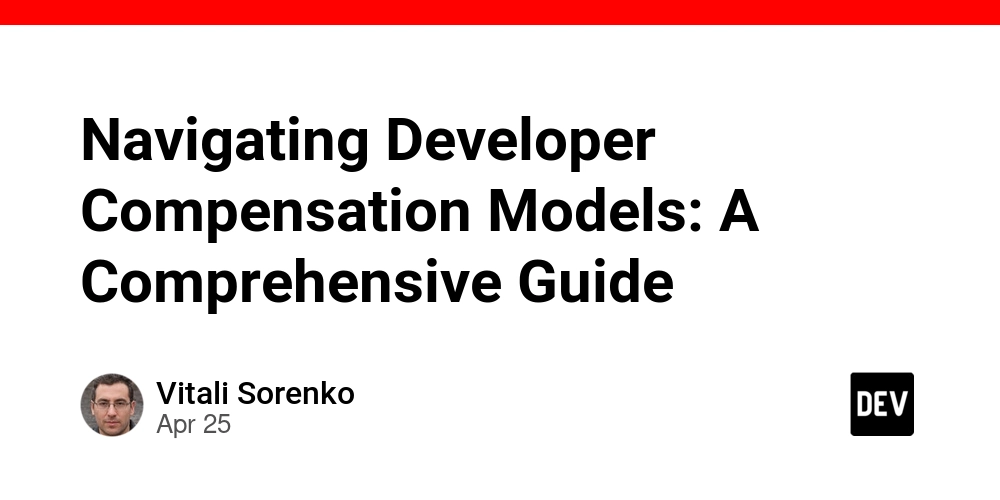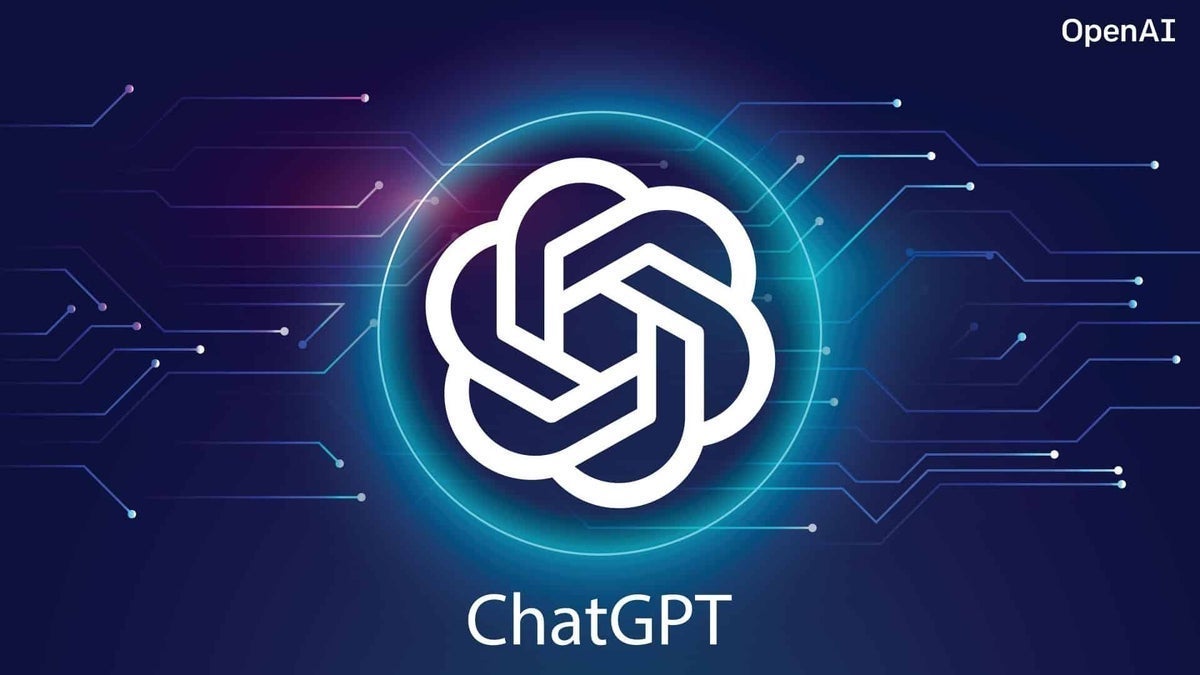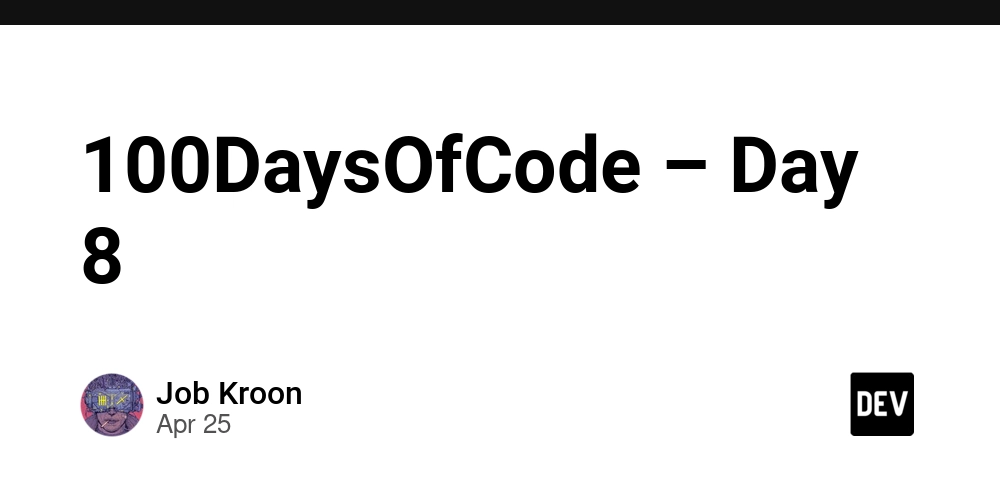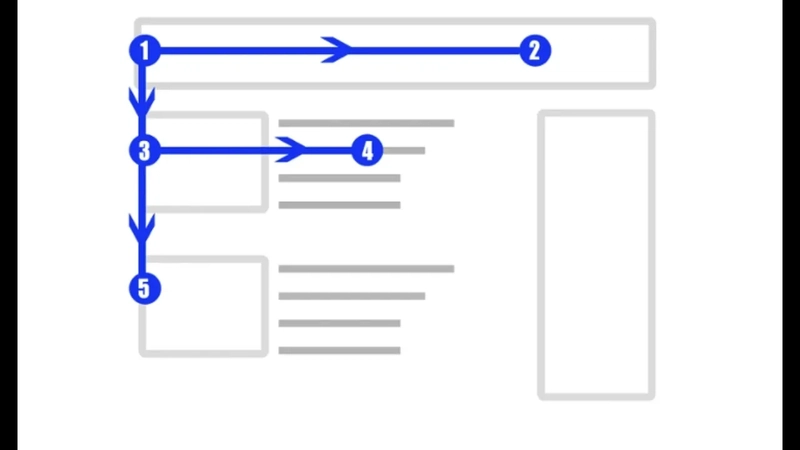Navigating Developer Compensation Models: A Comprehensive Guide
Abstract: This post dives deep into the multifaceted world of developer compensation models. We explore the core components—from base salaries to flexible packages and equity incentives—and provide background context, practical applications, challenges, and future outlooks. We also compare traditional financial models with innovative strategies emerging in today’s dynamic tech landscape. Throughout, we incorporate insights from open source funding, community governance models, and emerging blockchain-enabled initiatives, ensuring a holistic understanding for developers, employers, and investors alike. Introduction In a tech ecosystem defined by innovation and rapid evolution, developer compensation has become a complex subject. Companies now blend traditional payment structures with innovative incentives—such as stock options, bonuses, and additional non-monetary perks—to attract and retain top talent. This blog post extends the original article, Navigating Developer Compensation Models, by unearthing additional insights and practical strategies geared toward developers, startups, and larger corporations. In this post, we cover: Background and Context: The evolution and definitions of compensation models. Core Concepts and Features: In-depth explanations of base salary, equity, bonuses, and flexible packages. Applications and Use Cases: Practical examples from open source projects and tech startups. Challenges and Limitations: Understanding the pitfalls and technical issues in current compensation trends. Future Outlook and Innovations: Trends predicting the evolution of compensation models in our increasingly decentralized and remote work environment. Background and Context Historically, developer compensation was viewed in simple terms: a fixed base salary with occasional bonuses. Today, however, compensation is more nuanced. With the rise of startups and tech giants alike adopting equity-based models, financial independence is no longer merely the remit of high salaries. Instead, compensation is now closely linked to company performance and individual contributions. Key Definitions: Base Salary: The fundamental monetary compensation. It remains crucial as it provides stability and predictability. Learn more about trends in base salary disparities via this overview on BuiltIn Salaries. Equity and Stock Options: For many, equity means alignment. Stocks and options often bind a developer's success to that of the organization, a model frequently employed by startups. However, as noted in resources like Investopedia’s guide to stock options, these models come with inherent risks. Bonuses and Performance Incentives: Beyond salary, developers often enjoy rewards based on performance. Such incentives can drive innovation but may also lead to unnecessary pressure. For additional reading on effective bonus strategies, explore employee performance rewards on SHRM. Ecosystem Context: The tech industry is increasingly embracing remote work and flexible compensation packages. Modern companies are tailoring benefits to meet diverse needs, making compensation a blend of financial and non-financial rewards. Ideas such as open source funding and blockchain-based sponsorship models further enrich the conversation about sustainable developer compensation. Core Concepts and Features Let’s examine each component of these compensation models in detail, focusing on their features, benefits, and limitations. Base Salary Features: Provides financial security and regular income. Varies significantly depending on factors like region, experience, and industry. Often the benchmark against which additional incentives are measured. Benefits: Stability: Reliable budgeting for personal and professional expenses. Predictability: A steady monthly income enables long-term planning. Risks: Can vary widely based on geographic location and market volatility. May not adequately reward outstanding contributions or cover rising cost of living. Equity and Stock Options Features: Equity aligns a developer’s performance with the company’s success. Offers potential exponential growth if the company performs well. Benefits: Motivation and Retention: Employees are driven by direct stakes in company performance. Long-Term Financial Gain: If the company scales successfully, equity can be extremely valuable. Risks: Market fluctuations can render equity worthless. Legal and tax complexities require robust risk management strategies (see risk management strategies). Bonuses and Performance Incentives Features: Often tied to measurable performance metrics. May be seasonal, project-based, or continuous. Benefits: Recognition of Effort: Rewards can boost morale and drive productivity. Flexibility: Helps align short-term achievements with long-term incentives. Risks: Can create undue pressure or unhealthy comp

Abstract:
This post dives deep into the multifaceted world of developer compensation models. We explore the core components—from base salaries to flexible packages and equity incentives—and provide background context, practical applications, challenges, and future outlooks. We also compare traditional financial models with innovative strategies emerging in today’s dynamic tech landscape. Throughout, we incorporate insights from open source funding, community governance models, and emerging blockchain-enabled initiatives, ensuring a holistic understanding for developers, employers, and investors alike.
Introduction
In a tech ecosystem defined by innovation and rapid evolution, developer compensation has become a complex subject. Companies now blend traditional payment structures with innovative incentives—such as stock options, bonuses, and additional non-monetary perks—to attract and retain top talent. This blog post extends the original article, Navigating Developer Compensation Models, by unearthing additional insights and practical strategies geared toward developers, startups, and larger corporations.
In this post, we cover:
- Background and Context: The evolution and definitions of compensation models.
- Core Concepts and Features: In-depth explanations of base salary, equity, bonuses, and flexible packages.
- Applications and Use Cases: Practical examples from open source projects and tech startups.
- Challenges and Limitations: Understanding the pitfalls and technical issues in current compensation trends.
- Future Outlook and Innovations: Trends predicting the evolution of compensation models in our increasingly decentralized and remote work environment.
Background and Context
Historically, developer compensation was viewed in simple terms: a fixed base salary with occasional bonuses. Today, however, compensation is more nuanced. With the rise of startups and tech giants alike adopting equity-based models, financial independence is no longer merely the remit of high salaries. Instead, compensation is now closely linked to company performance and individual contributions.
Key Definitions:
- Base Salary: The fundamental monetary compensation. It remains crucial as it provides stability and predictability. Learn more about trends in base salary disparities via this overview on BuiltIn Salaries.
- Equity and Stock Options: For many, equity means alignment. Stocks and options often bind a developer's success to that of the organization, a model frequently employed by startups. However, as noted in resources like Investopedia’s guide to stock options, these models come with inherent risks.
- Bonuses and Performance Incentives: Beyond salary, developers often enjoy rewards based on performance. Such incentives can drive innovation but may also lead to unnecessary pressure. For additional reading on effective bonus strategies, explore employee performance rewards on SHRM.
Ecosystem Context:
The tech industry is increasingly embracing remote work and flexible compensation packages. Modern companies are tailoring benefits to meet diverse needs, making compensation a blend of financial and non-financial rewards. Ideas such as open source funding and blockchain-based sponsorship models further enrich the conversation about sustainable developer compensation.
Core Concepts and Features
Let’s examine each component of these compensation models in detail, focusing on their features, benefits, and limitations.
Base Salary
Features:
- Provides financial security and regular income.
- Varies significantly depending on factors like region, experience, and industry.
- Often the benchmark against which additional incentives are measured.
Benefits:
- Stability: Reliable budgeting for personal and professional expenses.
- Predictability: A steady monthly income enables long-term planning.
Risks:
- Can vary widely based on geographic location and market volatility.
- May not adequately reward outstanding contributions or cover rising cost of living.
Equity and Stock Options
Features:
- Equity aligns a developer’s performance with the company’s success.
- Offers potential exponential growth if the company performs well.
Benefits:
- Motivation and Retention: Employees are driven by direct stakes in company performance.
- Long-Term Financial Gain: If the company scales successfully, equity can be extremely valuable.
Risks:
- Market fluctuations can render equity worthless.
- Legal and tax complexities require robust risk management strategies (see risk management strategies).
Bonuses and Performance Incentives
Features:
- Often tied to measurable performance metrics.
- May be seasonal, project-based, or continuous.
Benefits:
- Recognition of Effort: Rewards can boost morale and drive productivity.
- Flexibility: Helps align short-term achievements with long-term incentives.
Risks:
- Can create undue pressure or unhealthy competition.
- Overemphasis on bonuses might sideline collaborative team environments.
Additional Benefits and Perks
Modern compensation models integrate non-salary perks to enhance job satisfaction:
- Health and Wellness Programs: Insurance, gym memberships, and mental health support.
- Flexible Working Hours and Remote Work Options: Promotes work-life balance, especially as remote work becomes mainstream; see the impact of remote work on pay.
- Learning and Development Opportunities: Sponsorship for training and certifications can contribute to continual professional growth.
Table: Comparison of Key Compensation Components
| Component | Benefits | Risks | References |
|---|---|---|---|
| Base Salary | Stability, Predictability | Regional discrepancies, inflation impact | BuiltIn Salaries |
| Equity/Stock Options | Alignment with company success, long-term gain | Market volatility, legal/tax complexities | Investopedia Stock Options |
| Bonuses/Incentives | Reward for performance, short-term motivation | Potential burnout, unhealthy competition | SHRM Bonus Structures |
| Additional Benefits | Enhanced quality of life via perks | Can be perceived as supplementary rather than core | Top Employee Benefits |
Flexible Compensation Packages
Companies are increasingly moving away from “one-size-fits-all” compensation plans. Instead, flexible packages allow developers to choose the mix of benefits that suit their personal circumstances—be it through remote work allowances, flexible benefits plans, or tailored bonus programs. For example, exploring flexible benefit plans can provide inspiration for structuring such packages.
Applications and Use Cases
Understanding theory is essential, but real-life applications truly demonstrate the power of innovative compensation models. Here are few practical examples:
Use Case 1: Startup Equity Models
A tech startup may offer a competitive base salary supplemented with stock options to align employee interests with the company’s growth. The model incentivizes innovation while providing a long-term financial reward. However, developers must be aware of the risks. Resources such as The Downside of Apache License highlight that similar risks exist in equity-driven retention strategies.
Use Case 2: Remote Work and Flexible Benefits
With the increasing global shift toward remote work, companies are reevaluating compensation models for geographically dispersed teams. By using flexible compensation packages, organizations can account for regional salary disparities and adjust benefits accordingly. For a deeper dive into remote work adjustments, check out insights on pay transparency in remote work.
Use Case 3: Open Source Developer Sponsorship
Open source projects often rely on alternative funding models. Many developers in this space benefit from sponsorship and grants, a method increasingly institutionalized with platforms such as GitHub Sponsors and community-driven funding programs. For additional insights into open source funding, see Navigating Financial Models for Open Source Projects.
Bullet List: Advantages of Diverse Compensation Models
- Tailored Packages: Allow developers to select benefits that suit their lifestyle.
- Risk Mitigation: Spread financial risk between fixed salaries and variable equity.
- Talent Retention: Incentives and perks help maintain long-term engagement.
- Market Adaptation: Flexible models respond better to global economic shifts.
- Innovation Alignment: Equity and bonus structures align individual and corporate growth objectives.
Challenges and Limitations
While innovative compensation models have numerous advantages, they also come with challenges.
Complexity in Administration
Managing varied compensation structures requires sophisticated financial planning tools and human resource strategies. Complex packages that include performance-based bonuses, stock options, and remote work incentives may cause administrative overhead.
Equity Valuation and Market Risks
Equity compensation, while attractive, is vulnerable to market volatility. If the underlying company performance falters, the value of stock options can plummet. This dynamic can be stressful, particularly for early-career developers.
Alignment Issues
The very nature of performance incentives can sometimes lead to misaligned objectives. Overemphasis on short-term performance may discourage collaborative long-term projects, which are critical in open-source environments.
Cultural and Regional Differences
Economic climates differ widely across regions. A compensation package that works well in one geography might not be sustainable in another. Employers must consider local market conditions, cost of living, and regional tax laws when designing compensation models.
Regulatory and Taxation Complexities
Equity, deferred bonuses, and international remote work arrangements can lead to complex tax implications. Staying compliant across diverse jurisdictions is a constant challenge for global organizations.
Future Outlook and Innovations
Looking forward, several trends promise to shape the developer compensation landscape:
Integration of Blockchain and Tokenization
Some companies are beginning to explore blockchain solutions to streamline compensation models. Tokenization can potentially allow developers to receive smaller, more immediate compensation rewards in the form of digital tokens. For instance, platforms are emerging that support open source developer compensation models using blockchain technology. Additionally, initiatives such as:
- Arbitrum for Developers
- Arbitrum and Community Governance
- Arbitrum and Open Source License Compatibility
- Arbitrum and Open Source Contributions
- Arbitrum and Token Standards
…are beginning to influence how developers are rewarded.
Enhanced Sponsorship Models
The concept of sponsoring developers is evolving. Many open source projects are partnering with tech giants and venture capitalists to provide regular stipends and grants to maintainers and contributors. For further exploration of open source sponsorship models, check out:
- Unlocking Opportunities: How to Become a Sponsored Developer
- The Crucial Role of Sponsorship in Open Source Projects
Additionally, platforms focusing on open source financial support and open source developer financial independence are proving transformative.
Greater Emphasis on Work-Life Balance
With remote work now a norm, companies are incorporating more holistic benefits into their packages—such as flexible schedules, wellness programs, and learning initiatives. This trend reinforces the notion that compensation is no longer just about money but also about overall job satisfaction. Employers look to resources like Top Employee Benefits and Sustainable Funding for Open Source to shape these models.
Data-Driven Compensation Strategies
The rise of AI and data analytics offers employers unprecedented insights into compensation models. Companies can now analyze performance data, market trends, and employee feedback to optimize compensation packages in real time. Such innovations could lead to more precise, fair, and adaptable compensation frameworks.
Summary
In conclusion, the developer compensation landscape has shifted from a one-dimensional salary model to a dynamic ecosystem of salary, equity, bonuses, and perks. This evolution is driven by multiple factors—from the rise of remote work and globalization to the disruptive influence of blockchain technology and tokenization. Understanding these components is crucial for both developers looking to maximize their financial potential and companies aiming to attract top talent.
Key Takeaways:
- Base Salary remains the foundation, providing stability.
- Equity and Stock Options align individual success with company growth but come with market risks.
- Bonuses and Performance Incentives reward exceptional work yet need careful balance to avoid undue pressure.
- Flexible Compensation Packages and additional benefits create a more holistic work environment.
- Future innovations like blockchain-based rewards and data-driven compensation strategies promise to reshape the landscape further.
By staying informed and adaptable, companies and developers alike can navigate these complexities, ensuring that compensation models not only attract talent but also sustain long-term innovation and growth.
For further reading and perspectives on evolving compensation strategies, you may explore additional resources on:
- Navigating Comprehensive Compensation Plans
- Open Source Developer Financial Support
- Open Source Project Financial Management
This comprehensive guide aims to empower all stakeholders with the knowledge to make informed decisions in a rapidly evolving technical landscape. Whether you are a developer seeking sustainable financial independence or an employer striving to innovate your compensation structures, understanding these trends is paramount in today's competitive market.
By combining traditional salary models with innovative equity and flexible benefits—backed by modern data analytics and blockchain innovations—the future of developer compensation is bright and full of potential. Embrace these changes to foster a dynamic, motivated, and loyal technical workforce.
Happy coding and strategic planning!






































































![Apple to Shift Robotics Unit From AI Division to Hardware Engineering [Report]](https://www.iclarified.com/images/news/97128/97128/97128-640.jpg)
![Apple Shares New Ad for iPhone 16: 'Trust Issues' [Video]](https://www.iclarified.com/images/news/97125/97125/97125-640.jpg)






























































































































































































![[The AI Show Episode 144]: ChatGPT’s New Memory, Shopify CEO’s Leaked “AI First” Memo, Google Cloud Next Releases, o3 and o4-mini Coming Soon & Llama 4’s Rocky Launch](https://www.marketingaiinstitute.com/hubfs/ep%20144%20cover.png)

















































































































































































.jpg?#)




























































